2013.12.23 19:47
23 December
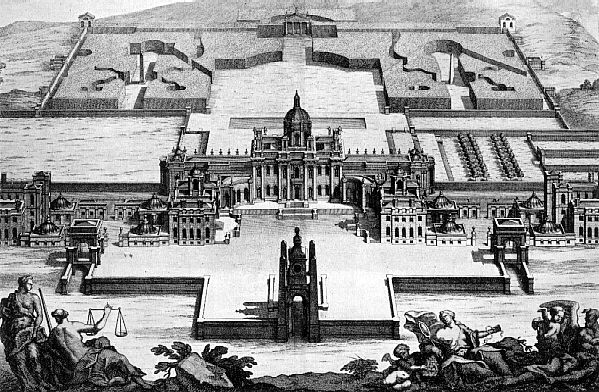
I'm now wondering whether the above image of Castle Howard from Vitruvius Britannicus (published 1715-1725) somehow inspired the architecture of Piranesi as delineated within Il Campo Marzio (1762). Remember the...
I was prompted by the "what is experimental architecture" thread to look again at "Piranesi's Campo Marzio: An Experimental Design." After reading a few pages it became evident that the essay/project could be 'rewritten' to deliver a whole other set of results, a whole other 'history.'
By covertly publishing the Ichnographia in a second state was Piranesi himself conducting an experiment to see who would ultimately discover the two different plans?
Piranesi's language of the plans relates back to the origins of Rom(ulus and Remus) itself.
"Both Piranesi's Campo Marzio and Picasso's Dame au violon are "projects," though the former organizes an architectural dimension and the latter a human mode of behavior. Both use the technique of shock, even if Piranesi's etching adopts preformed historical material and Picasso's painting artificial material (just as later Duchamp, Hausmann and Schwitter were to do even more pointedly). Both discover the reality of a machine-universe: even if the eighteenth century urban project renders that universe as an abstraction and reacts to the discovery with terror, and the Picasso painting is conceived completely within this reality.
But more importantly, both Piranesi and Picasso, by means of the excess of truth acquired through their intensely critical formal elaborations, make "universal" a reality which could otherwise be considered completely particular."
Manfredo Tafuri, Architecture and Utopia: Design and Capitalist Development, p. 90.
There is no Picasso painting with the title Dame au violon, but it is possible that Tafuri is referring to Portrait of a Girl (1914):

Project: redraw the Ichnographia Campus Martius following the principles of Picasso's (Synthetic) Cubism.
| |
2014.07.14 13:30
East Jerusalem Light Rail Attacked
...I can't believe you just wrote "if Israel wanted to they could vaporize Palestine." The vaporization of Palestine already happened. Although I don't feel close to the situation now, there was a time (the late 1970s) when I had a brief conversation with the last Palestinian Governor of Galilee. We discussed an urban design school project which I was working on with his niece (whose family fled Palestine into Lebanon and even there lost their farmland in southern Lebanon to Israel). I showed him how our study area comprised three areas of distinct characteristics. He heard me out and then simply said, "The three areas must be autonomous!" I had no idea then what he was really implying, but his niece right away said, "Oh Uncle, stop." The other time we spoke was on the phone, where I left a message for his daughter. Judging by how he relayed my message, I don't think he was too thrilled about his daughter going out with an American.
The ex-Governor and his wife were brutally murdered in their Philadelphia suburb home in 1986. There are still some suspicious aspects to the murders, and it is even possible that these deaths could be added to tammuz's list above of deaths by terrorists.
2014.08.21 17:42
Archinect, please boycott Israel (its about time!)
The solution and scenario proposed by this thread is obvious: boycott Israel.
It's strange for me to remember (because of this thread) the first time I ever heard of (activism against South African) apartheid, it was in the kitchen of the Faruqi residence, spring 1984. Faruqi's niece, who I went to architecture school with, returned to Lebanon upon graduation in 1980. She returned to the States for a visit in 1984 and invited me to lunch with her aunt. Lois Faruqi, a Belgian, was a music professor, and I had met her before at a Bach fugue concert circa 1978. Anyway, another guest at the luncheon was a Indian grad student living at the Faruqi house for the term. Most of the conversation was between Mrs. Faruqi and the grad student all about apartheid. Faruqi's niece and myself were somewhat out of our depth, and especially confused by the ongoing distinction between the treatment of 'coloreds' versus the treatment of 'blacks', both of which were bad, but the treatment of 'coloreds' was not as bad as the treatment of 'blacks'. Finally we had to ask, "why are you making a distinction between the treatment of coloreds and blacks?" The answer, "Because in apartheid blacks are African negroes and coloreds are brown skinned people like Indians." I honestly had no idea that apartheid was such a systematic form of racism.
It's very sad and still troubling to think that Lois Faruqi and her husband (the last Palestinian governor of Galilee) were, two years later, brutally murdered in that very house.
The next time I heard discussions on apartheid was in 1985, when I was working at the University of Pennsylvania and the University was being pressured (by students, etc.) to boycott South Africa (which it ultimately soon did).
Fortunately by the early 1990s the boycott worked.
2015.09.24 20:50
kapow!
now you're definitely not getting the clues
or
multiple choice
Museum of Art Display Failures
Museum of Provincial Art
Museum of Double Standards
Museum of Reality Show Art
Museum of Public Voices
or
...it sounds like you're well on your way to designing a specific Siamese-twin museum: a museum of retro-active architecture co-joined with a museum of pro-passive architecture. If two buildings are not allowed, then design the operation that will split the two.
or
hope you're enjoying . . .
2016.05.17 09:34
14 May
First state and second state of the Ichnographia Campus Martius side by side...5319b
It remains a mystery as to why Piranesi changed all the circuses into an identical form, except the identical circus form is the only clue.
2016.05.18 09:55
OMA's hyper Corb
Orhan, perhaps you are referring to the similarity of OMA's base plan of the National Art Museum of China (5811g) and Le Corbusier's factory level roof plan of the Electronic Calculation Center Olivetti (2195).
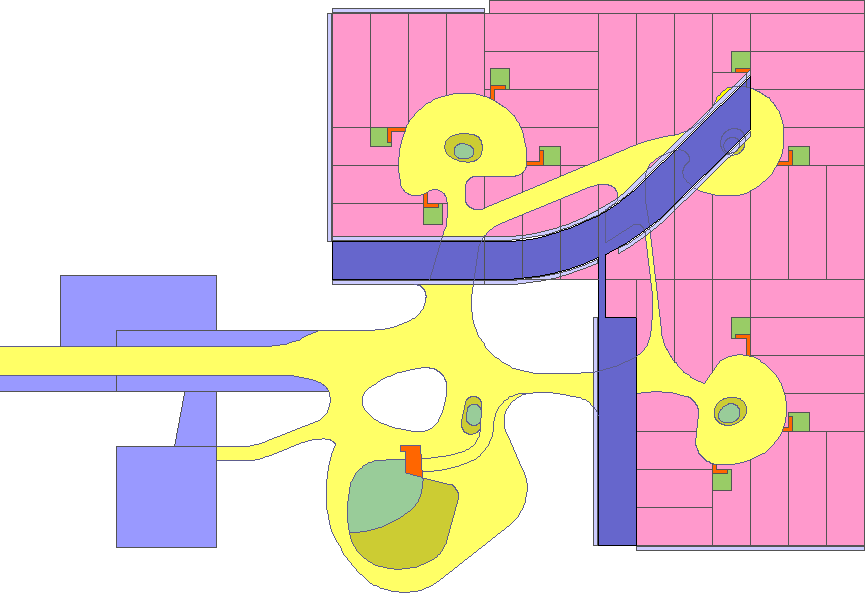
Yes, there is a kinship (and note how a kinship between there two building designs was already noted here (5 January) over three years ago), but don't overlook the evolution of this plan within OMA's own oeuvre.
The roof of the main plinth depicts the plan of the Forbidden City and its immediate surroundings, thus providing a conceptional clue to the labyrinthian plan within the plinth. Reference here to OMA's Beijing Central Business District (2003 competition) and their Beijing Preservation Study (2003).
Then there is the relationship of the NAMOC and the design for LACMA (2001 competition) where LACMA's Pompeiian base relates directly to NAMOC's main plinth and where LACMA's Meisian court and encyclopedian plateau and organic roof are wrapped together to form NAMOC's lantern.
And, on a strictly formal level, the interior plan of the NAMOC's main plinth is a combination of the McCormick Trubune Campus Center at IIT (1997-2003) and the horizontal Ascot Residence (2003 competition).
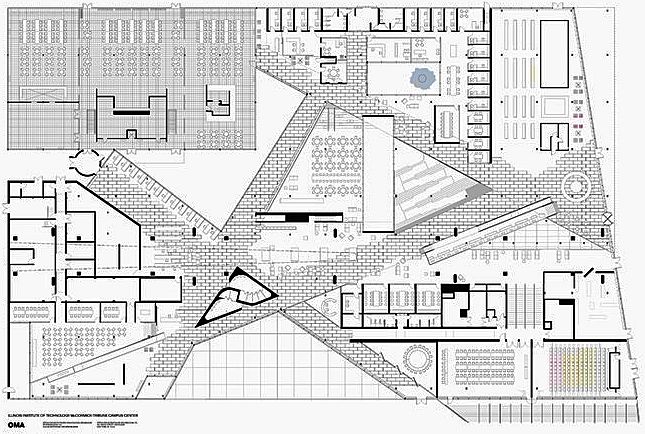

More can be said regarding NAMOC's relation to Le Corbusier's plan designs, like level 4 of the preliminary scheme of the Governor's Palace, Chandigarh (1952) or a combination of all the levels of the Palais des Congrès (1964), which then recalls Hejduk's House 10: Museum (1963-67).
And, personally, I like to compare and contrast the base plan of the NAMOC with the Palace of Ottopia (1999) and House for Otto 3 (1999)
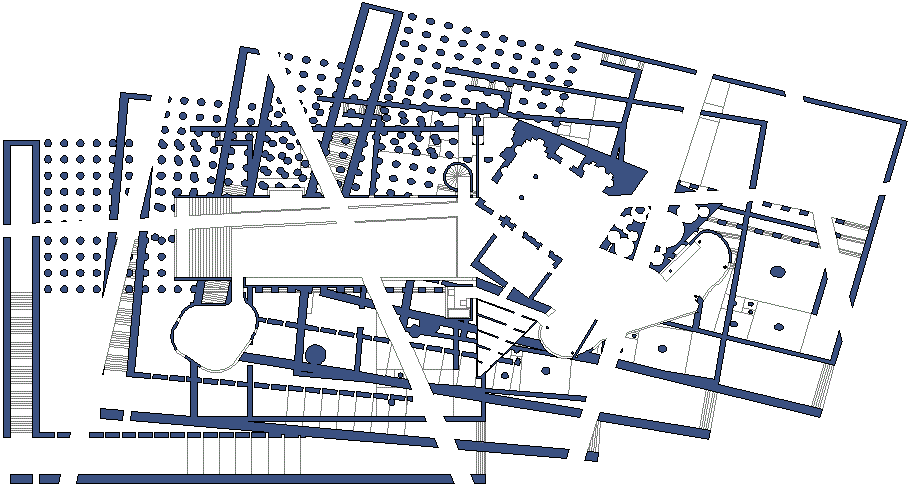
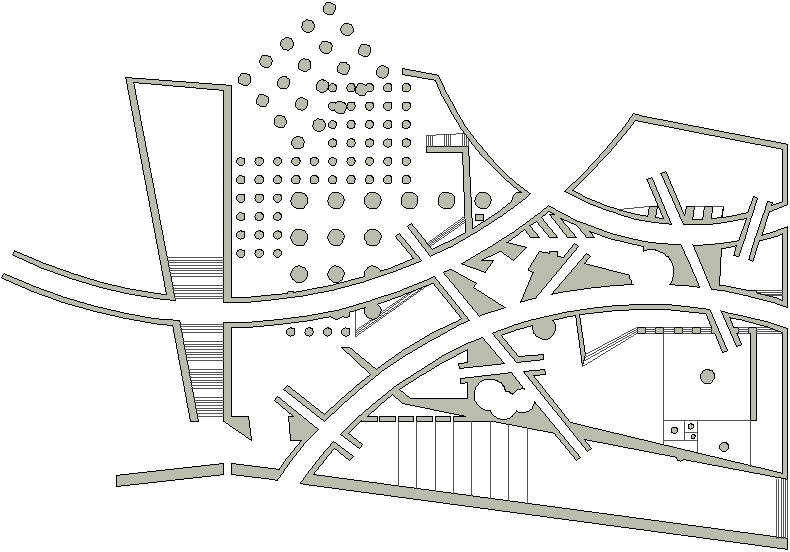
|